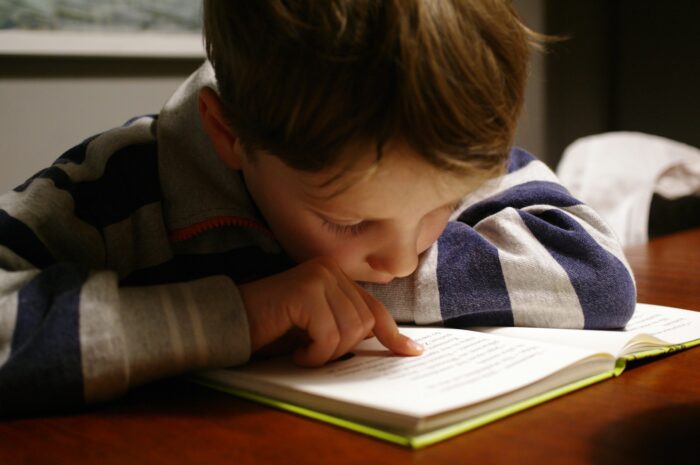Through research and experimentation, scientists discovered that that children’s natural learning process does not align with how school teach reading.
The dangerous effects of an improper education system
The damage resulting from a misalignment between what children need and what they are taught is permanent. People who struggle with reading are more likely to commit crimes, drop out of schools, and even live in poverty. As well, children who do not develop reading proficiency by the end of third grade are likely to remain poor readers for the rest of their lives, struggling not only in English but other subjects as well. This is especially alarming considering that more than 60% of American fourth-graders are not proficient at reading, according to an estimate from the National Assessment of Education Progress. This has been the case since the 1990s. The scary part? Virtually all kids can learn to read — if they are taught the right way.

Photo by Michał Parzuchowski on Unsplash.
We assume that reading is a skill that comes naturally to children. However, there are thousands of studies showing that, unlike speaking, our brains are not wired to read. Children need to be explicitly taught phonics — how to connect different sounds with the corresponding letters. In other words, in order to become a good reader, children must learn to decode words.
The cause of the educational misalignment
So why has this educational misalignment occurred in the North American education system? The answer is straightforward if we trace this to the teachers. To investigate this phenomenon of the educational misalignment, Emily Hanford interviewed graduates of teaching school to get the full story. Jessica Root, an intervention specialist in Ohio, was told that teachers needed to get children “excited about what they’re reading, find books that they’re interested in, and just read, read, read.” An elementary school principal, Kathy Bast, said that she learned “it was just: Put literature in front of the kids, teach the story, and the children will learn how to read through exposure.”
It became obvious to Kim Harper, the supervisor of literacy in Bethlehem, Pennsylvania, what was happening when she visited the district’s lowest-performing elementary schools. When children approach a word they did not know, the teacher would tell them to guess based on the pictures and context. Instead of learning phonics, the purpose of teaching children to read was to understand the story. She also noticed that when a child read “pony” instead of “horse”, they would not be corrected as they are considered “synonyms”.
Foreseeing improvements
The Bethlehem schools decided to give a new curriculum a try with their early elementary school students. The curriculum includes phonics lessons with small-group activities to ensure every child’s needs are met. At the end of each year, the school district assesses kindergartners’ reading skills through a test. Before the training began, in 2015, over half the students tested below the benchmark score. However, after the teachers were trained in reading science in 2018, 84% of students met or exceeded the benchmark score. Surely, this new curriculum will foster more positive changes in classrooms.
Categorised in: Uncategorized
This post was written by Helen
